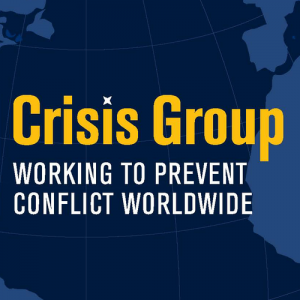by Chris Lundry
 The International Crisis Group has released another outstanding report on Indonesian extremism (available here) that reflects their in-depth approach, extensive connections, and long reaching background into the topic. This report focuses on extremist strategies for regrouping in the context of Indonesian law enforcement successes at breaking up cells and killing or arresting members.
The International Crisis Group has released another outstanding report on Indonesian extremism (available here) that reflects their in-depth approach, extensive connections, and long reaching background into the topic. This report focuses on extremist strategies for regrouping in the context of Indonesian law enforcement successes at breaking up cells and killing or arresting members.
The successes are balanced, however, by the extremists’ ability to shift tactics and recruit new members. The report also outlines the new levels of cooperation between extremist groups, some of which still have varying agendas but that have found common ground in demonizing their enemies, especially the Indonesian state and police. Remarkably, and despite years of admonitions to help overcome this problem, prisons remain a major ground for the radicalization and recruitment of new members, as well as sites for planning attacks, facilitating communication and arranging marriages – arranged marriages remain an important method of aiding and abetting wanted extremists, fundraising, and building cross-organizational ties.

Indonesian extremist Abu Bakar Basyir is currently serving a prison term, but continues to play a role in extremist activities
One of the ICG’s strengths is the ability to relate stories and events as examples of larger phenomena. The tale of wanted extremist Ali Miftah, for example, visiting other extremists in jail, vividly portrays the failure in Indonesian law enforcement to adequately prevent prisons from remaining important conduits for extremism. Tightening controls on imprisoned extremists, however, seems a matter of utmost import. Similarly, the continuing ability for extremists to both move around within Indonesia as well as internationally – for training with Abu Sayaaf in the southern Philippines, for example – helps to illustrate the problems associated with Indonesia’s identification system.
The report cites a combination of luck (on the part of law enforcement) and ineptitude (on the part extremists) in limiting the effectiveness of recent attacks and preventing others, including the breakup of the Aceh training camp in February 2010, a major blow to extremists. Part of this success can be attributed to differing approaches to jihad, including focusing on immediate attacks without thought of long-term plans. Another aspect is surely the reliance on recent converts to the cause that come from prison populations.
An intriguing element of the report – at least as an Indonesianist with experience conducting research in eastern Indonesia – is the emergence of the “Bima Connection.” Bima is the provincial capital of West Nusa Tenggara, on the island of Sumbawa. The religious make-up of the islands east of Java is fascinating: moving west to east, one predominantly finds Hindu Bali, Hindu west Lombok and Muslim east Lombok, Muslim Sumbawa, Catholic Flores, and Protestant Sumba and West Timor. And the farther east one ventures, in many ways the influence of the central state dwindles. Although rumors continue to swirl of allegations of “Islamization” in West Timor following a brief bout of religious violence there in 1999, there remain vast areas with low population densities and little law enforcement where, if they were careful and unobtrusive, I imagine extremists could build bases; perhaps the emergence of the Bima Connection signals this.
The report’s recommendations for action on the part of the Indonesian government are, as usual, on target (even if some of them are becoming repetitive due to Indonesian inaction). Some of the inaction may be linked to an inability to marshal resources, however; revamping and modernizing the nation’s identification program, for example, might prove costly.
Although the ICG released two reports on last year’s violence in Ambon (here and here), the region is only tangentially mentioned in this report. Indonesian extremists, however, were actively stoking the sectarian violence as it was occurring, and Ambon is a frequently cited example of a region under threat from “Crusader” invaders and thus ripe for jihad. In the context of regrouping and recruiting, I would have thought that Ambon would have featured more prominently in this report, especially given recent academic work that discusses the prestige associated with those who have committed violence in the name of jihad (for example the work of Muhammad Najib Azca). That being said, the violence in Ambon was relatively quickly quelled, and the Indonesian police were able to prevent armed agitators from entering the region.
This report is another essential read from the ICG. Its lessons, though drawn from Indonesia, are likely applicable to other regions as well.


